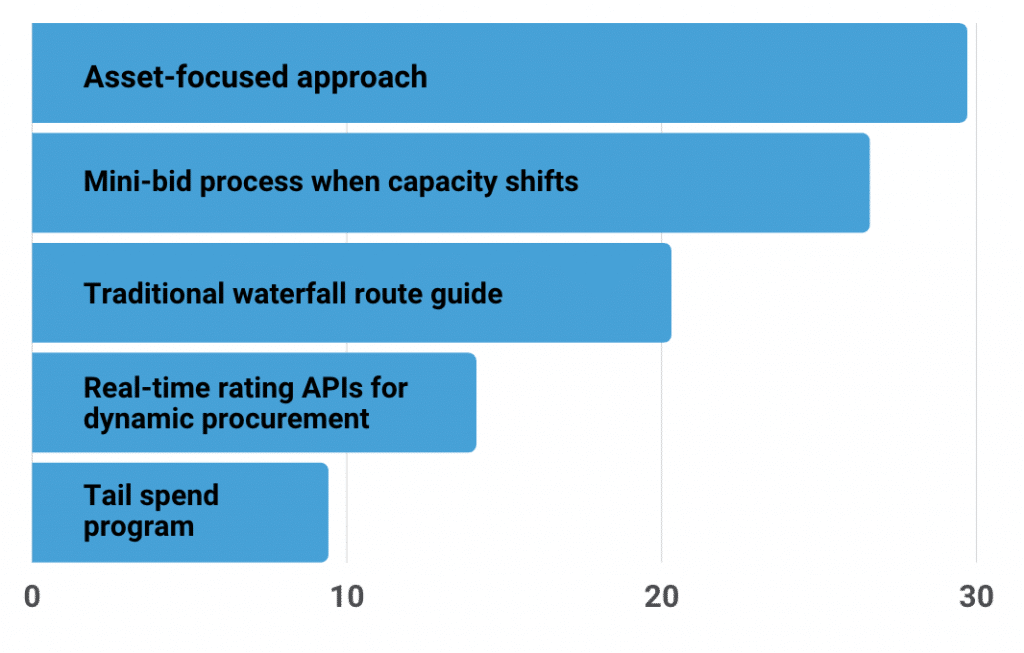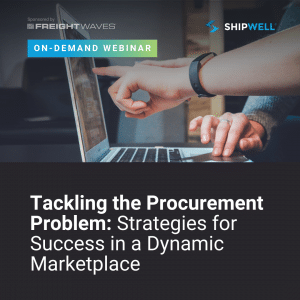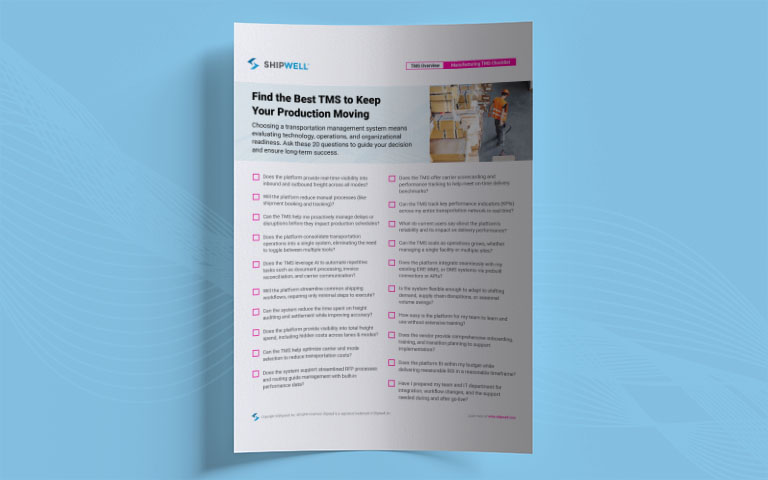Procurement Challenges: Poll Results Breakdown

Supply chains aren’t static. Your annual bid shouldn’t be, either.
The Covid-19 pandemic has amplified the importance of having a proactive shipping strategy. As capacity constraints tighten and more customers shift to buying online, the pressure to deliver on time (and still be under budget) is more intense than ever.
You must develop an adaptable, resilient approach to procurement so you can leverage efficiency and experience continued growth. During our latest one-hour webinar with resident experts Jacob Gordon and Kris Glotzbach, we discussed how to create a resilient supply chain that holds up under pressure, and how to develop an effective and strategic approach to planning and optimizing your annual bid.
In the process, we asked the audience to reflect on the obstacles and issues that they’ve been faced with since the onset of the pandemic. The results of which provide a unique view into the procurement pain points that appear to be shared by many shippers across the country.
Read on for our examination of the results, or watch the on-demand webinar now for a full view of the issues and solutions.
1) What is the top concern with your existing strategy?

The thing that jumps out here is the fact that the answers are split almost exactly evenly. What this really shows is the fact that everyone out there has a number of questions and concerns around their existing strategy. There is no singular ‘silver bullet’ question that everyone is working towards. And the best way that I know to answer the diversity of questions is through data aggregation, and then you can start picking off these questions in turn.
By bringing together all relevant data around your strategy, you are granted the ability to not only make an informed decision about what adjustments may need to be implemented, but also the insights you need to know whether it’s working or not.
This data driven approach actually gets results in many fields — including last weekend’s big game. Take the Chiefs for example. They may not have taken home the win this year, but the way they’ve employed data in their strategy is a massive part of what brought them to the final game for the second year in a row. They have all types of advanced analytics that they use to prepare. They use pregame to prepare strategy for the game as well as adjustments that they make in game. They're considering things from fourth downfield goal, to average seconds between the snap of the football and the quarterback release, passing efficiency, expected yards to go. They make these calls in real time in between plays while on the sideline. How? Because they’ve brought all that data together in one place to enable them to make highly informed snap decisions.
The point is, just as in football, data can help to take you to the next level. You need centralized data from all your teams — procurement, warehouse, fulfillment, scheduling — all of them. Simply having the data isn’t enough. If you want to create a cohesive strategy, you need to bring it all together.
2) Which bidding strategy is most critical to your operations today?

Looking at the responses here, the fact that the asset-focused approach came out on top isn’t surprising — it can be very expedient as well as reliable. But this approach can often end up being more expensive, and from experience, it at times comes with a lot of opacity and lack of visibility. A good comparison here would be to look at the approach as being similar to booking a trip with a travel agent. You know you are going to get what you are looking for, but you have no real control over how you get there. Your price could be higher, you could end up with options you wouldn’t have selected, but you have no real way of knowing. The task gets done, and it gets done without a lot of difficulty, but beyond that you don’t get a lot of insight into the process.
Another long-standing strategy that featured strongly in the poll was the traditional waterfall route guide. Again, this is a strategy that gets a lot of attention, and for good reason. Like an asset-focused approach, it can be expedient and easy to understand, but it’s far from a one-size-fits-all strategy and can be disastrous when pitted against volatility in the marketplace. A more effective and sophisticated approach would be to combine this with other methods. Things like partitioning freight spend and allocating a portion to traditional waterfall route guides, and the other portion to market responsive spot negotiations. Or you could employ index based contracts, tiered pricing, or shorter contracting periods. There's a lot of options and these strategies can help move the needle, but the real competitive advantage in pricing — and in reputation — comes with algorithmic treatment of procurement data. This can sound complicated to apply, but as mentioned above with the football example, these techniques are becoming pretty commonplace these days.
These two responses, the asset-focused approach and the waterfall strategy, are probably the two most time-honored techniques on the list, but also the least advanced. So seeing that 50% of the respondents selected strategies that are more based in analytics and technology-based solutions is a good indication that it may be time to start experimenting with them yourself.
3) How did your pricing strategy change last April when capacity shifted?

For obvious reasons, networks were displaced last year, so the fact that half of our viewers were scrambling for spot capacity isn’t exactly surprising. 2020 caught a lot of people off guard. Likewise for those who were already locked into their RFPs. But the fact is, by April there were indications that change was on the horizon, and we can see that in the smaller subset of respondents who had already adapted.
So what did they have that the other 76% of respondents didn’t? The most likely answer is, data. Not only the data that enabled them to see what was coming, but the information needed to adapt their strategy quickly. Being able to quickly answer questions like which carriers are the most reliable? Which have a poor track record and are more likely to buckle under pressure? Who is likely to have capacity when I need it? Being capable of quickly answering questions like these and establishing a procurement strategy around the answers is vital to avoiding costly setbacks during challenging times.
With the right tools — information and the capability to act on it — it is possible to establish a proactive strategy that can carry you through any rough patch. Even the monumental rough patch that was 2020.
Ready to hear more?

If 2020 taught us anything, it’s that it pays to be prepared. Watch the full on-demand webinar now to learn:
- Methods for protecting and strengthening your brand with reliable, on time delivery
- Ways to optimize for potential constraints … and better margins
- Techniques for improving carrier and broker reliability
- Methods for expanding your network and securing better supplier relationships
- How to achieve more accurate forecasting to help you stay in budget


.svg)








